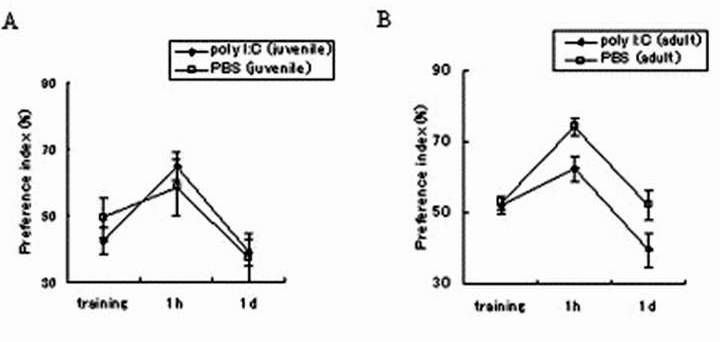Maternal infection during pregnancy is an established epidemiological risk factor for the development of autism spectrum disorders (prenatal exposure to rubella, herpes influenza or CMV). The model encompasses exposure of pregnant dams to influenza virus or to non viral immunostimulants such as bacterial lipopoly saccharide and double strand RNA poly(I:C), producing prominent behavioral, histological and neurochemical abnormalities in the offspring correlating to findings in ASD patients. This paradigm was tested in both mice and rats and is applicable to both species.
Reproduced with permission from Elsevier
(http://www.sciencedirect.com/science/journal/00063223)
Ozawa et al, 2006: Impaired novel object recognition in the adult offspring of poly I:C treated dams. (A) Exploratory preference of juvenile mice of dams treated with poly I:C versus PBS. (B) Exploratory preference of the adult mice of both groups. Data presented as mean+SEM. Adult offspring of poly I:C treated dams display lower novel object preference compared to offspring of PBS treated dams.
References:
Meyer U, Nyffeler M, Yee BK, Knuesel I, Feldon J (2008) Adult brain and behavioral pathological markers of prenatal immune challenge during early/middle and late fetal development in mice. Brain Behav Immun 22(4):469-486
Ozawa K, Hashimoto K, Kishimoto T, Shimizu E, Ishikura H, Iyo M (2006) Immune activation during pregnancy in mice leads to dopaminergic hyperfunction and cognitive impairment in the offspring: a neurodevelopmental animal model of schizophrenia. Biol Psychiatry 59(6):546-554

